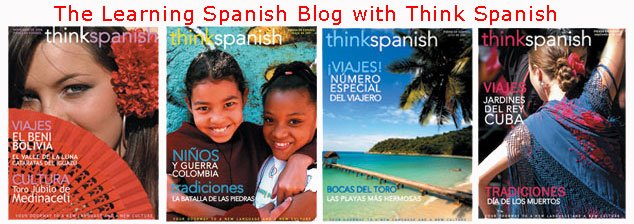 Hola Think Spanish Readers! We found yet another great COOL SCHOOL OF THE MONTH. We recommend Viva Buenos Aires Spanish School!
Hola Think Spanish Readers! We found yet another great COOL SCHOOL OF THE MONTH. We recommend Viva Buenos Aires Spanish School!
Viva Buenos Aires is a different kind of Spanish school. The main purpose, besides learning the language, is that students experience Argentina in many different ways.
Buenos Aires is a capital with European flavor and Latin spirit. It’s cosmopolitan, intense, rich in nuances and history. This amazing city is the main character in all Viva Buenos Aires Spanish courses. All programs mix language lessons with cultural tours. While students learn Spanish they will discover the history behind the main spots in Buenos Aires: why Caminito is so colorful, how tango was born, Evita’s history and its mysteries.
Viva Buenos Aires has thematic courses for individual students with the same objectives: to be submerged into the language and local culture. Learn Spanish in a dynamic way with complementary activities that allow you to assimilate it easily.
The school also prepares customized programs for groups from the same institution or company, considering their specific needs in the development of the language’s communicative abilities. The material is prepared exclusively for the group, focusing on the vocabulary of its area of work and in other elements that optimize the experience. Viva Buenos Aires also considers the group’s personal interests to make the experience more entertaining: tango lessons, special guided tours, wine tasting and many others activities can be part of the program.

Viva Buenos Aires invites their students take part in cultural activities such as dance lessons, tango shows, movies exhibitions, visits to historic cafes such as Tortoni and Las Violetas, day tour to estancias where students can experience country traditions such as horseback ridings, mate and barbecue. And they also prepare trips to the most amazing destinations in Argentina such as Patagonia, Mendoza and Iguazu. Students can learn Spanish in Buenos Aires and, for instance, travel to Mendoza for a special program that combines wine tasting and adventure activities such as rafting and canopy. Or travel to Patagonia to discover Perito Moreno Glacier or trekking in Chalten.
Think Spanish Magazine
is proud to announce Viva Buenos Aires as its “Cool School” for November!!



